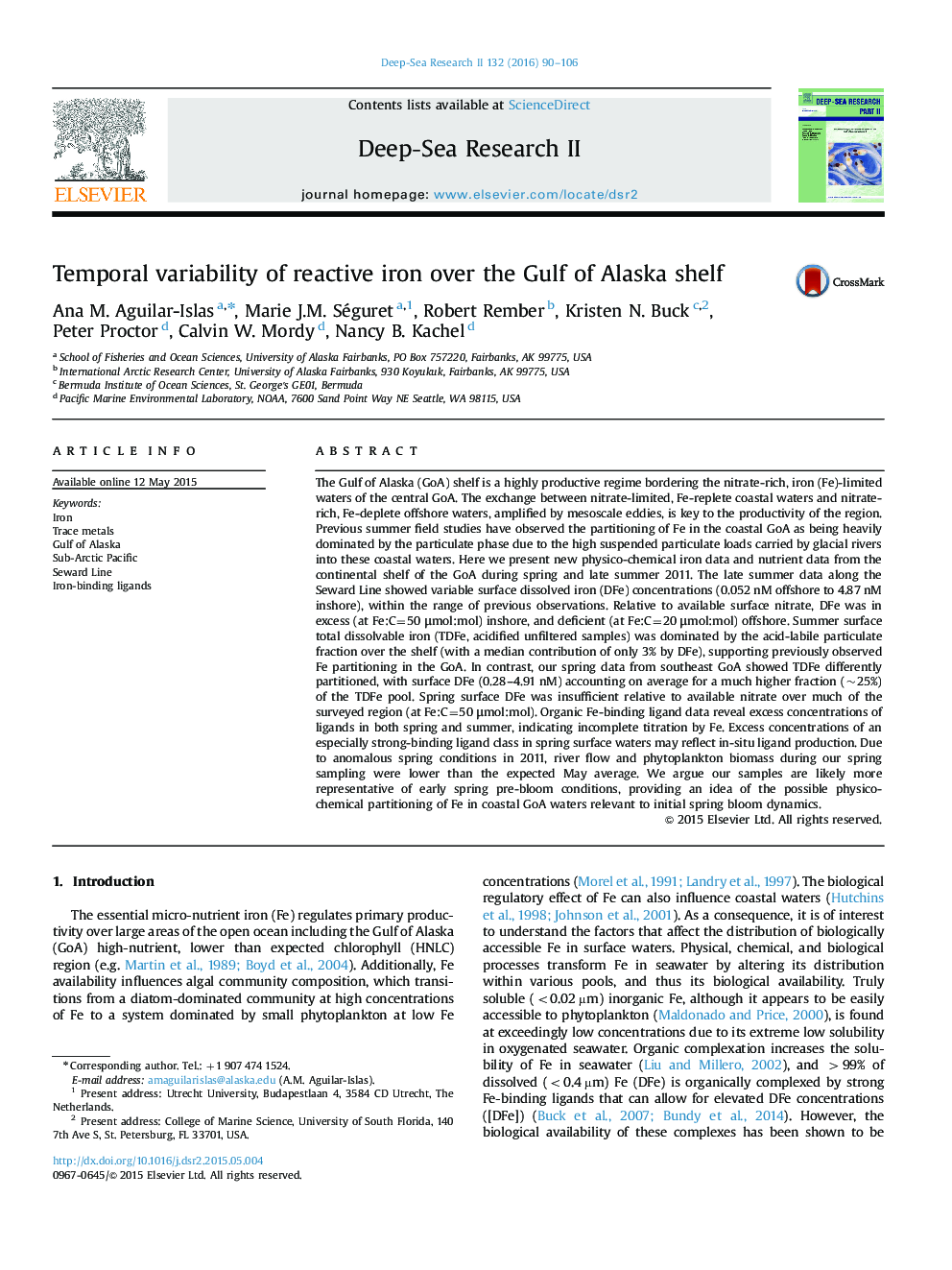| کد مقاله | کد نشریه | سال انتشار | مقاله انگلیسی | نسخه تمام متن |
|---|---|---|---|---|
| 4536081 | 1626410 | 2016 | 17 صفحه PDF | دانلود رایگان |
The Gulf of Alaska (GoA) shelf is a highly productive regime bordering the nitrate-rich, iron (Fe)-limited waters of the central GoA. The exchange between nitrate-limited, Fe-replete coastal waters and nitrate-rich, Fe-deplete offshore waters, amplified by mesoscale eddies, is key to the productivity of the region. Previous summer field studies have observed the partitioning of Fe in the coastal GoA as being heavily dominated by the particulate phase due to the high suspended particulate loads carried by glacial rivers into these coastal waters. Here we present new physico-chemical iron data and nutrient data from the continental shelf of the GoA during spring and late summer 2011. The late summer data along the Seward Line showed variable surface dissolved iron (DFe) concentrations (0.052 nM offshore to 4.87 nM inshore), within the range of previous observations. Relative to available surface nitrate, DFe was in excess (at Fe:C=50 μmol:mol) inshore, and deficient (at Fe:C=20 μmol:mol) offshore. Summer surface total dissolvable iron (TDFe, acidified unfiltered samples) was dominated by the acid-labile particulate fraction over the shelf (with a median contribution of only 3% by DFe), supporting previously observed Fe partitioning in the GoA. In contrast, our spring data from southeast GoA showed TDFe differently partitioned, with surface DFe (0.28–4.91 nM) accounting on average for a much higher fraction (~25%) of the TDFe pool. Spring surface DFe was insufficient relative to available nitrate over much of the surveyed region (at Fe:C=50 μmol:mol). Organic Fe-binding ligand data reveal excess concentrations of ligands in both spring and summer, indicating incomplete titration by Fe. Excess concentrations of an especially strong-binding ligand class in spring surface waters may reflect in-situ ligand production. Due to anomalous spring conditions in 2011, river flow and phytoplankton biomass during our spring sampling were lower than the expected May average. We argue our samples are likely more representative of early spring pre-bloom conditions, providing an idea of the possible physico-chemical partitioning of Fe in coastal GoA waters relevant to initial spring bloom dynamics.
Journal: Deep Sea Research Part II: Topical Studies in Oceanography - Volume 132, October 2016, Pages 90–106
